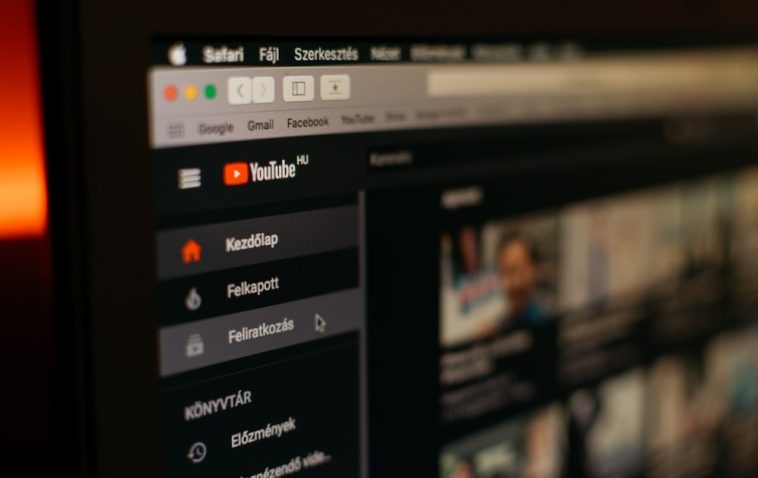Introduction.
Starting a YouTube channel without ever appearing on camera? Yes, it’s possible, and more people are doing it every day.
If you’ve ever wanted to share content on YouTube but felt uncomfortable with the idea of putting your face in front of a camera, then starting a faceless YouTube channel might be perfect for you.
Plus, with tools like ChatGPT, creating engaging content has never been easier—even if you’re not a natural writer or don’t consider yourself especially tech-savvy.
Faceless channels are popular for many reasons: you get to share your voice and ideas while keeping your privacy, which can be a big advantage for many.
And the numbers don’t lie; there are plenty of faceless YouTubers pulling in impressive viewership and building strong communities. Channels like “TechGumbo” (with around 1.5 million subscribers) and “Alux” (over 4 million subscribers) are prime examples.
They build loyal audiences through educational content, animated videos, voiceovers, or text, without ever showing a person on-screen.
In this guide, I’ll walk you through everything you need to know to get started with a faceless YouTube channel.
Why Go Faceless on YouTube?
There are quite a few reasons why people choose to keep their YouTube channels faceless. Privacy is a big one.
Maybe you’d like to stay anonymous or prefer keeping your online presence separate from your personal life. Some people also find that not appearing on camera lets them focus more on the content itself, rather than stressing over presentation or editing appearances.
A faceless channel also lets you experiment with different types of content, like narration over images, animations, infographics, screen recordings, and more.
This opens up a range of possibilities, especially when paired with AI tools like ChatGPT that can help you brainstorm, write, and edit your video scripts quickly.
How Do I Start a Faceless YouTube Channel with ChatGPT?
Step 1: Choose a Niche.
The first step to launching a YouTube channel, faceless or not, is figuring out what you want to talk about.
Pick a topic you’re genuinely interested in or something that has a lot of audience demand. Some popular faceless channel niches include:
- Tech Tutorials and Reviews: You can review gadgets, and software, or provide “how-to” tech guides.
- Financial Education: Many YouTubers explain investing, personal finance, or crypto without showing their faces.
- Storytelling: From historical events to creepy stories, faceless narrators often do well in these genres.
- Productivity and Self-Improvement: Voice-over channels with helpful advice are popular, particularly in self-help and productivity.
- Gaming and Animation: Gameplays or animated videos are huge and don’t require you to appear on screen.
Use ChatGPT to explore different angles on these topics. You could type, “Generate five unique video ideas for a financial education YouTube channel,” and see what it suggests.
Step 2: Script Your Video with ChatGPT.
Once you have an idea for your first video, it’s time to script it. Here’s where ChatGPT becomes super useful. You can ask it to help you write a script, or outline, or even give you ideas for an engaging opening.
For example, let’s say you’re creating a video on “Budgeting Tips for Beginners.” You could prompt ChatGPT with, “Write a conversational introduction for a YouTube video on budgeting tips for beginners.” It can generate a script that you can tweak to fit your voice and style.
Remember, even if ChatGPT helps create the draft, make it your own. Add personality, and feel free to adjust for clarity and flow.
You can even get ChatGPT to write in a specific tone—friendly, motivational, or straightforward, depending on your channel style.
Step 3: Find Visuals to Match Your Script.
Now, since you’re not showing your face, you’ll need something visual to keep your viewers’ attention. There are lots of options here:
- Stock Footage and Images: Sites like Pexels, Unsplash, and Pixabay offer free resources that you can use in your videos.
- Screen Recordings: If your content is educational or tutorial-based, recording your screen can be effective.
- Animations and Text-Based Videos: Software like Canva, Vyond, or Adobe Spark can help create animated videos, infographics, or text-based visuals.
- B-roll Footage: B-roll is secondary footage used to support your narration and can be super effective in keeping your audience engaged.
Step 4: Record Your Voiceover.
The voiceover is the key component of a faceless channel. Even if you’re a bit shy about public speaking, don’t worry—most people get comfortable over time.
To get started, you can record audio using a smartphone or a budget microphone, which you can pick up for under $50. Free software like Audacity is also great for basic audio editing.
If you’d rather not use your voice, you can even use AI-generated voiceovers, though many viewers still prefer the authenticity of a real voice. Plus, using your voice lets you connect more with your audience and build trust.
Step 5: Edit Your Video.
Editing might seem intimidating at first, but basic video editors like iMovie, Windows Movie Maker, or even mobile apps like CapCut can handle the essentials.
Add your voiceover, visuals, background music, and any text overlays or transitions. Aim for a clean, professional look without overloading with too many effects.
If you’re new to editing, try searching for beginner-friendly tutorials on YouTube. Editing becomes faster and easier with practice, and you’ll quickly develop your own style.
Step 6: Optimize Your Videos for YouTube Search
This is an often-overlooked part of the process. To make sure people can find your videos, you’ll need to add relevant keywords to your title, description, and tags. A tool like TubeBuddy or VidIQ can help you find trending keywords in your niche.
For example, if your video is about “Budgeting Tips,” related keywords could be “saving money,” “budgeting for beginners,” and “personal finance.”
Including these in your title, description, and tags helps YouTube understand what your video is about and recommend it to viewers interested in similar topics.
Step 7: Post Regularly and Engage with Your Audience
Consistency is key to building a YouTube channel. Aim to post videos on a regular schedule, whether that’s once a week, biweekly, or even monthly. Sticking to a schedule builds trust with your audience, who will start to look forward to your content.
Engaging with your viewers is also essential. Reply to comments, ask questions in your videos, and encourage viewers to share their thoughts. Even on a faceless channel, this interaction helps create a sense of community.
FAQs
1. Can I make money with a faceless YouTube channel?
Absolutely. Faceless channels can generate revenue through ad revenue, sponsorships, affiliate marketing, or even selling products. Many successful YouTubers make a full-time income without ever appearing on screen.
2. Do I need any expensive equipment to start?
No, you don’t! Basic equipment like a smartphone, budget microphone, and free editing software is enough to get started. As you grow, you might want to invest in better tools, but they aren’t necessary at the start.
3. What if I’m not a natural writer or speaker?
That’s where tools like ChatGPT come in. It can help you brainstorm, draft, and polish scripts, even if writing isn’t your strong suit. And with practice, you’ll become more comfortable with speaking and narrating.
4. Can I create a channel without using my voice?
Yes, you can use AI-generated voices or text-to-speech software, though many viewers prefer hearing a real voice. It’s worth trying your voice to see if you’re comfortable, but if not, there are still options.
5. How do I keep my content fresh and engaging?
Regularly explore new ideas with ChatGPT or browse trending topics in your niche. Mixing up formats, like adding quizzes or interactive questions, can also keep things interesting.
Conclusion
Starting a faceless YouTube channel can be a great way to share your ideas while maintaining privacy and creativity.
With the help of tools like ChatGPT, it’s now easier than ever to plan, script, and create engaging content without needing to be a tech expert or a camera pro.
So, if you’ve been thinking about starting your channel but weren’t sure where to begin, this is your sign!
Are you ready to take the leap and create a faceless YouTube channel? Or maybe you’re still on the fence—what would be your biggest challenge in getting started?





GIPHY App Key not set. Please check settings